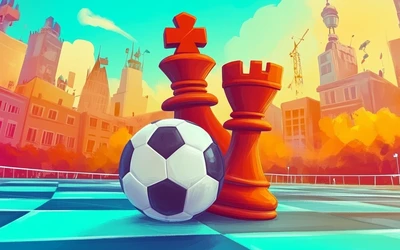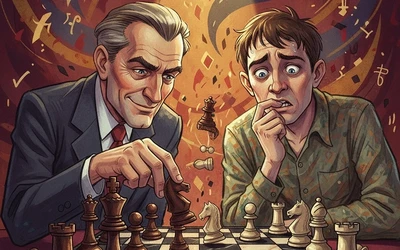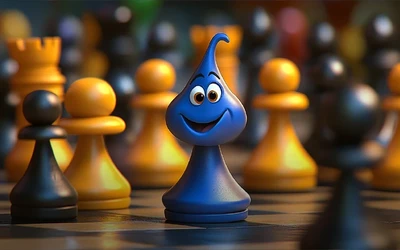
Wearing your chess seat belt : An important safety measure to prevent blunders!
In chess, the secret weapon isn't just your next move...it's the move your opponent wishes you never saw coming!Wear your seat belt. Look both ways before crossing the road. Wash your hands before you eat. These are safety precautions so hardwired into our system that we don't need to spare a single thought to make it happen.
Yet on the chess board, we make our move without any care in the world as to why our opponent made his last move or consider what their plans could be. We get so eager to carry on with our hard thought out plans and crush the opponent with our brilliant ideas that we end up committing our most horrifying blunders.
Every move changes the dynamics of the game in some way. If we fail to notice it, it may become the dictating factor for our loss despite our valiant efforts. It is one of the most common reasons for committing heart-breaking blunders in nearly won games.
Example 1: A pattern seen in many amateur games,
Black is a piece down, his king looks in dire need of protection. You would be imagining different variations to crush your opponent in the best way possible. Black plays 1... Re8. You play 2.Qh5 threatening both f and h pawns. You can almost taste the victory, but then 2..Re1# and it’s all over.
Example 2 : Rarely the bug catches Grandmasters as well, Carlsen vs Gagunashvili,
Carlsen plays 1. e5 and misses out the mate with 1..Rc1!
Example 3: A time when Kasparov let slip that he may be human too,
An engine evaluation of the position shows -4. Kasparov is 2 pawns up. Taking on e3 will clear up the pieces getting into a comfortable won endgame. Kasparov takes 1...??Qe3. White takes 2.Qxg4! - simultaneously attacking black’s queen, rook and bishop. Anand went on to win the game.
Keep in mind the last two examples are from blitz games. These examples are not to poke fun at the undisputable legends but merely to show us that to err is human. What makes them special is how extremely rare and shocking these events are for them.
You would have often heard stronger players asking you to look for checks (direct attacks on king), captures (possible material exchanges and capture) and threats (serious attacking plays) - possible from your side when you begin analyzing any position.
Essentially it is important to do it the other way as well. A kind of Reverse Checks, Captures and Threats.
What are my opponent’s possible checks?
What are my opponent’s possible captures?
What are my opponent’s possible threats and plans?.
If we make it a habit to ask these questions regularly, we will potentially be training our minds to make it second nature to avoid blunders (even in time crunch situations like rapid or blitz games)
A more advanced version of this would be the concept of “prophylaxis”, where you make a move or series of moves to prevent your opponent from carrying out their plans and possibly simultaneously improve your own position.
Not all opponent moves may cause a major dent in your plans. But it is usually the sharpest player that determines who becomes the predator and who becomes the prey.
Wear your seat belt. Look at both sides before crossing the road. Wash your hands before you eat. Always, always, always - analyse your opponent’s move and plans before making a move.
You may also like
 FM MathiCasa
FM MathiCasaChess Football: A Fun and Creative Variant
Where chess pieces become "players" and the traditional chessboard turns into a soccer field FM MattyDPerrine
FM MattyDPerrineWhy Masters Crush Lower-Rated Players (and You Struggle)
Hint: The secret isn’t a high ceiling CM akiba182
CM akiba182The Big Mistake Players Make After a Game: The Engine Trap
Want to Really Improve? Follow This Step-by-Step Game Analysis Method ChessMonitor_Stats
ChessMonitor_StatsWhere do Grandmasters play Chess? - Lichess vs. Chess.com
This is the first large-scale analysis of Grandmaster activity across Chess.com and Lichess from 200… GM Avetik_ChessMood
GM Avetik_ChessMood10 Things to Give Up to Enjoy Chess Fully
Discover how embracing a lighter mindset can help you enjoy chess again and achieve better results. CM HGabor
CM HGabor